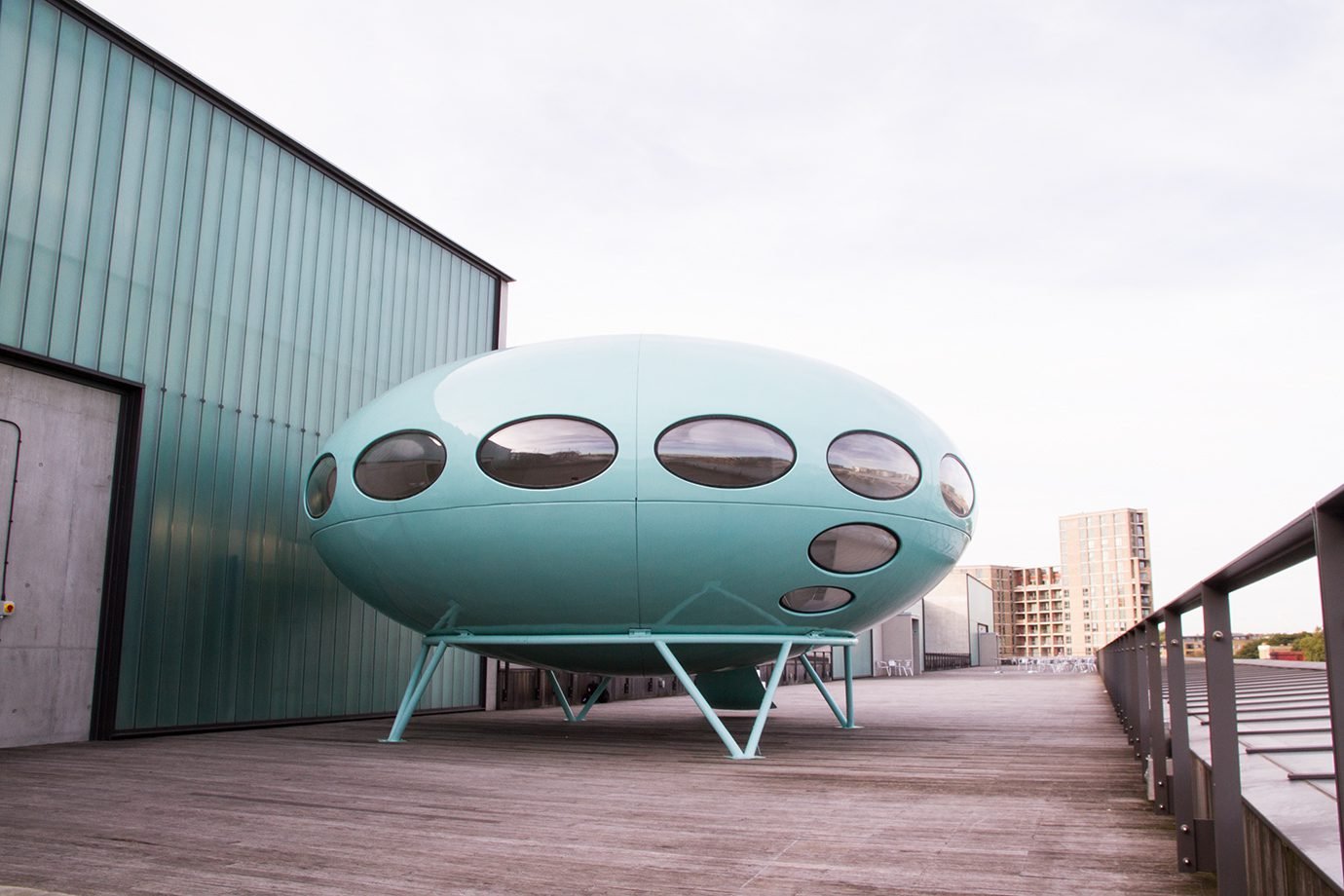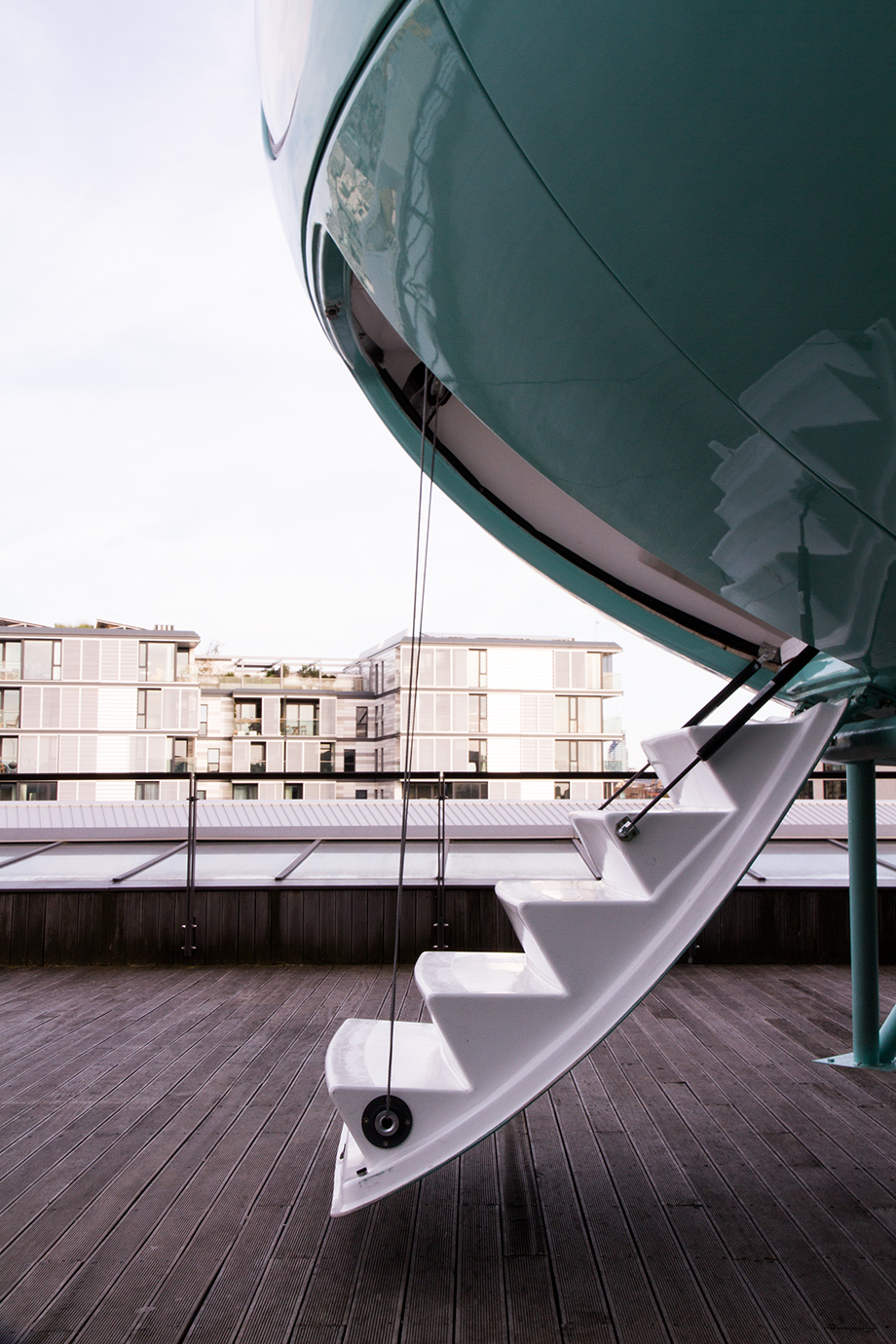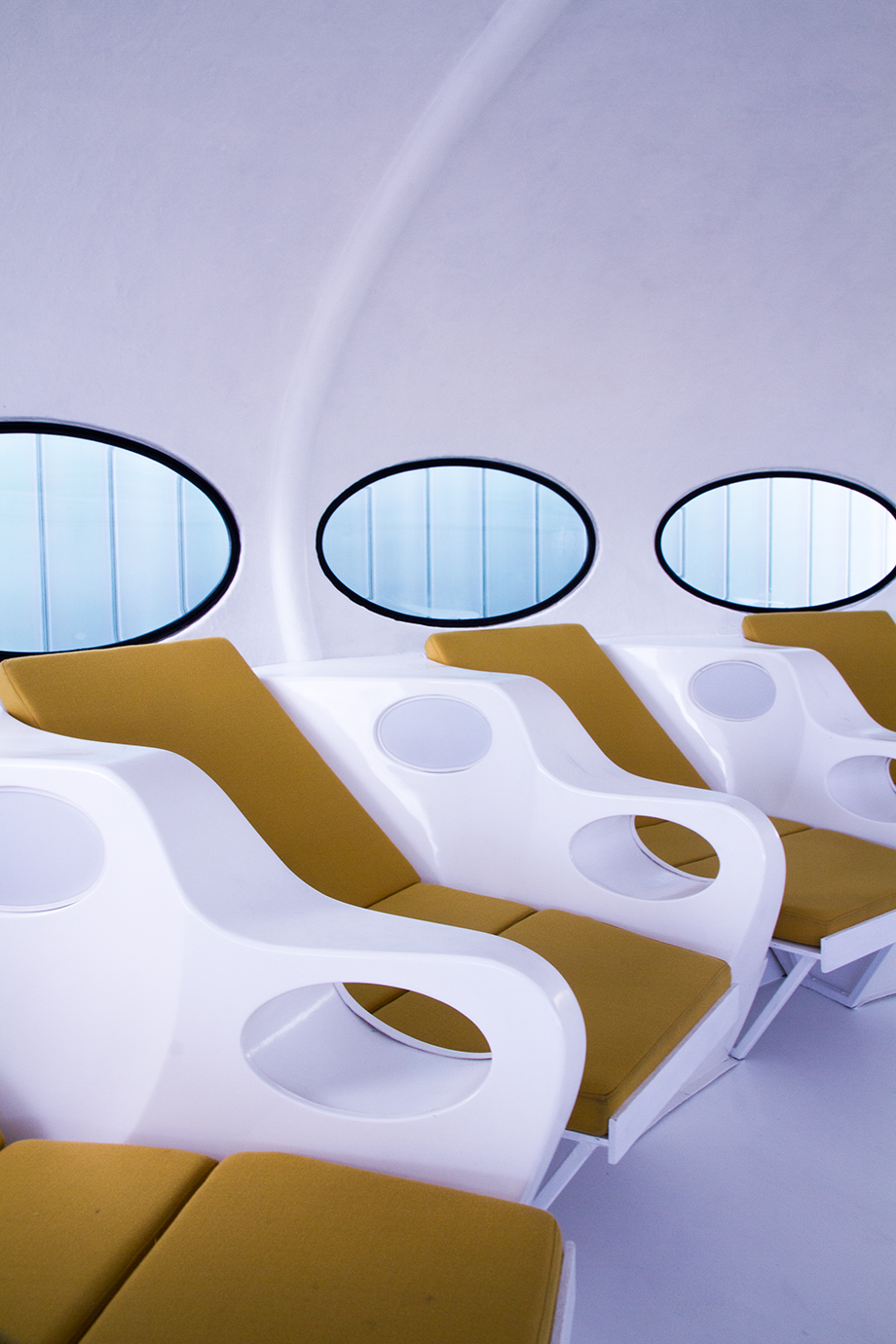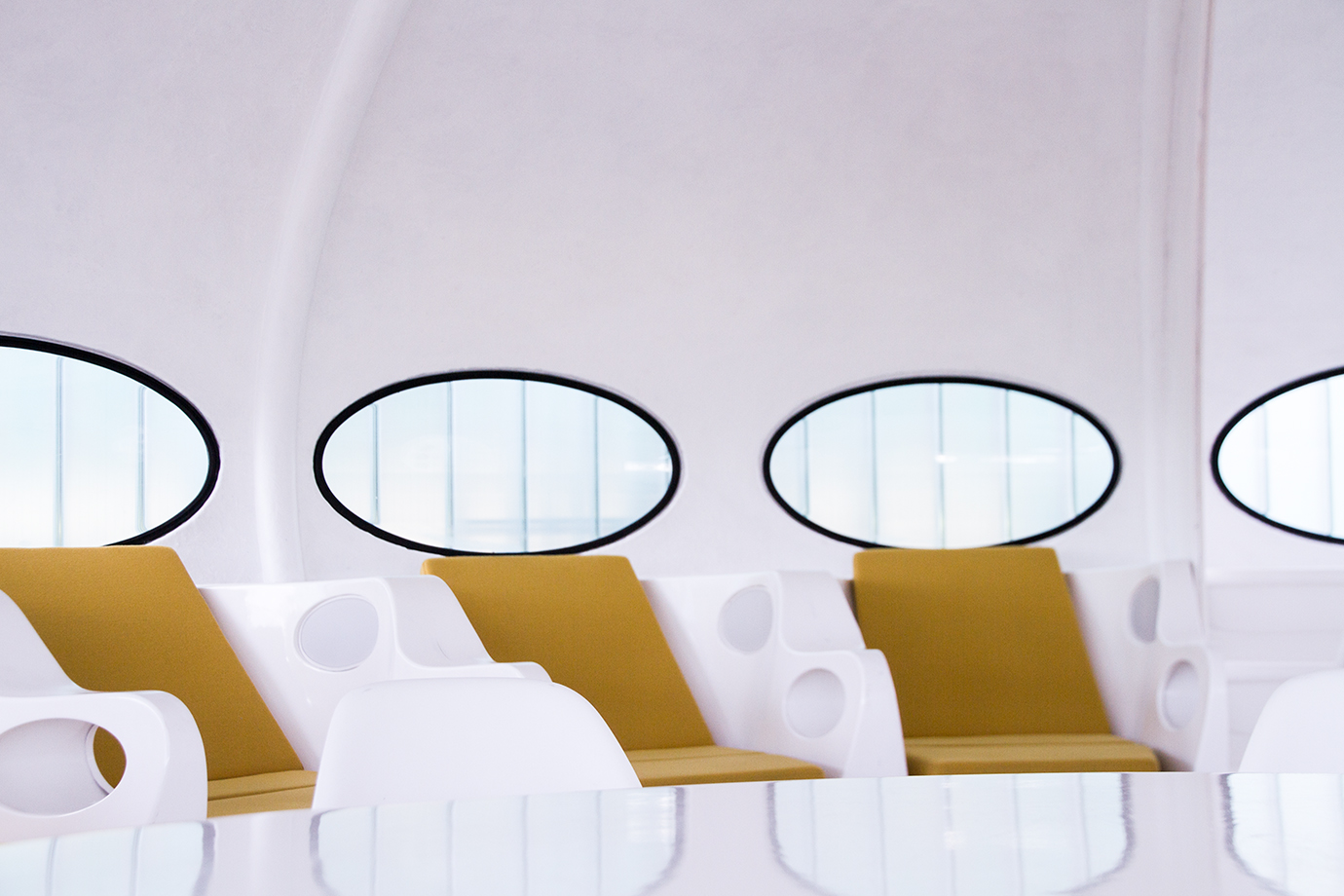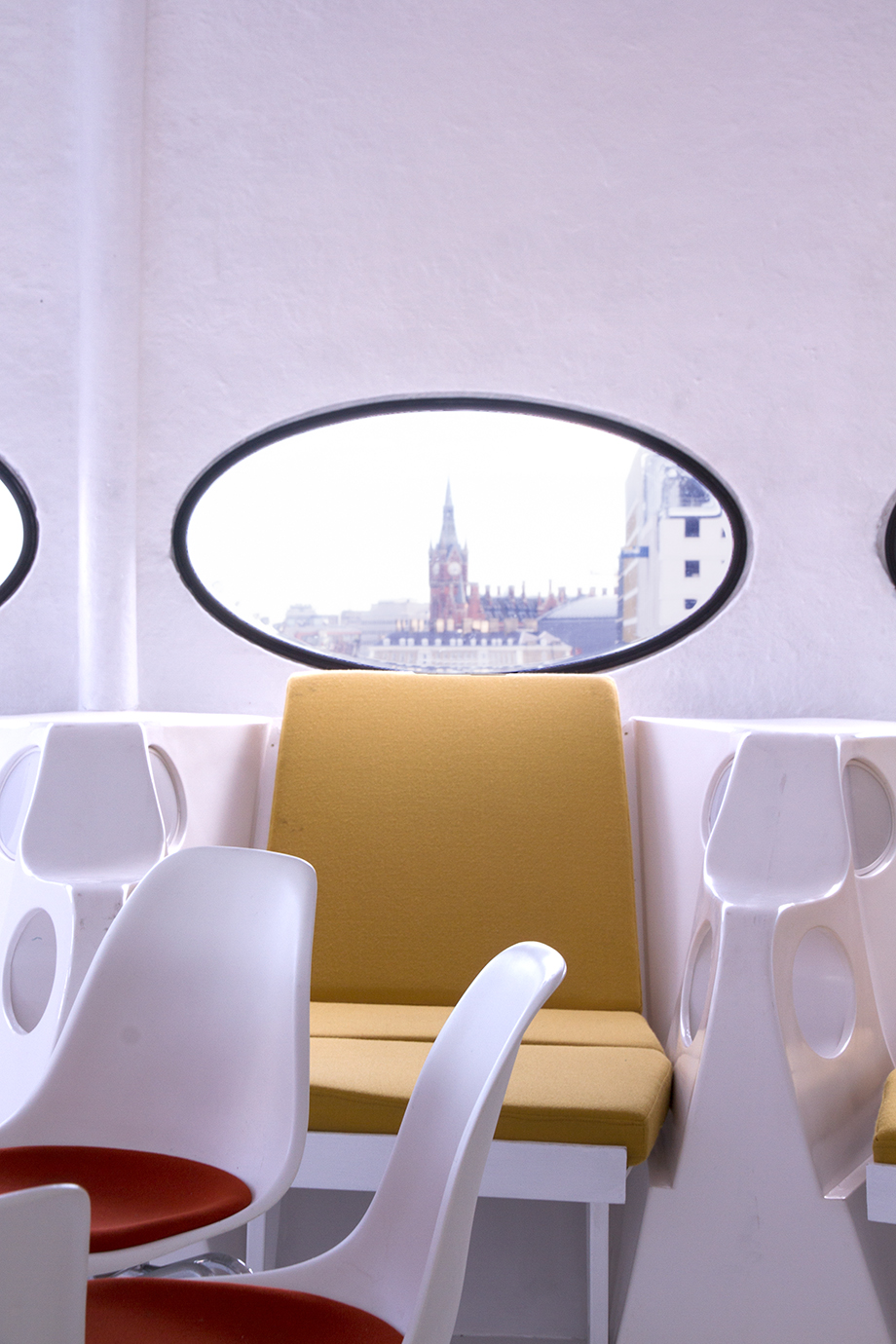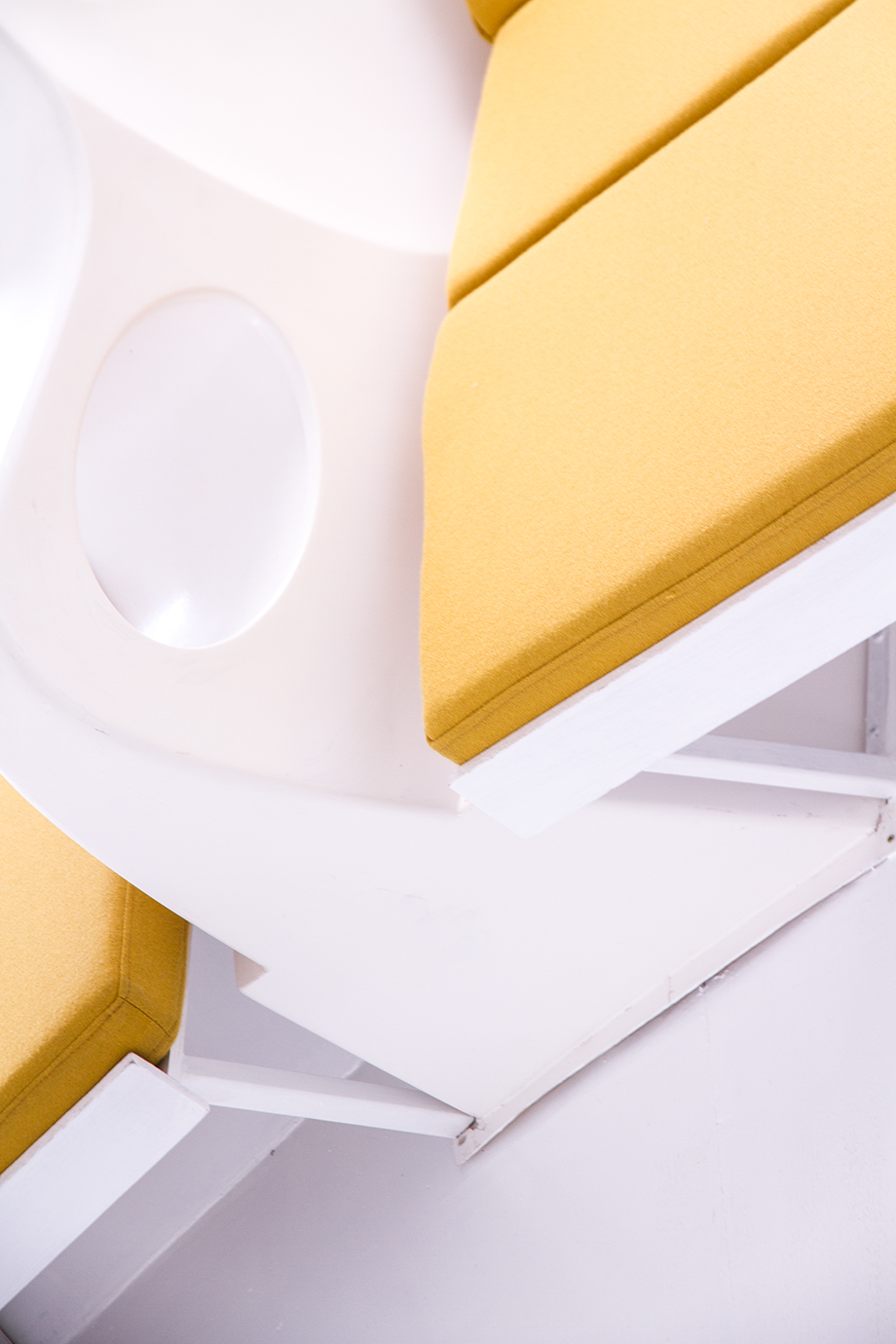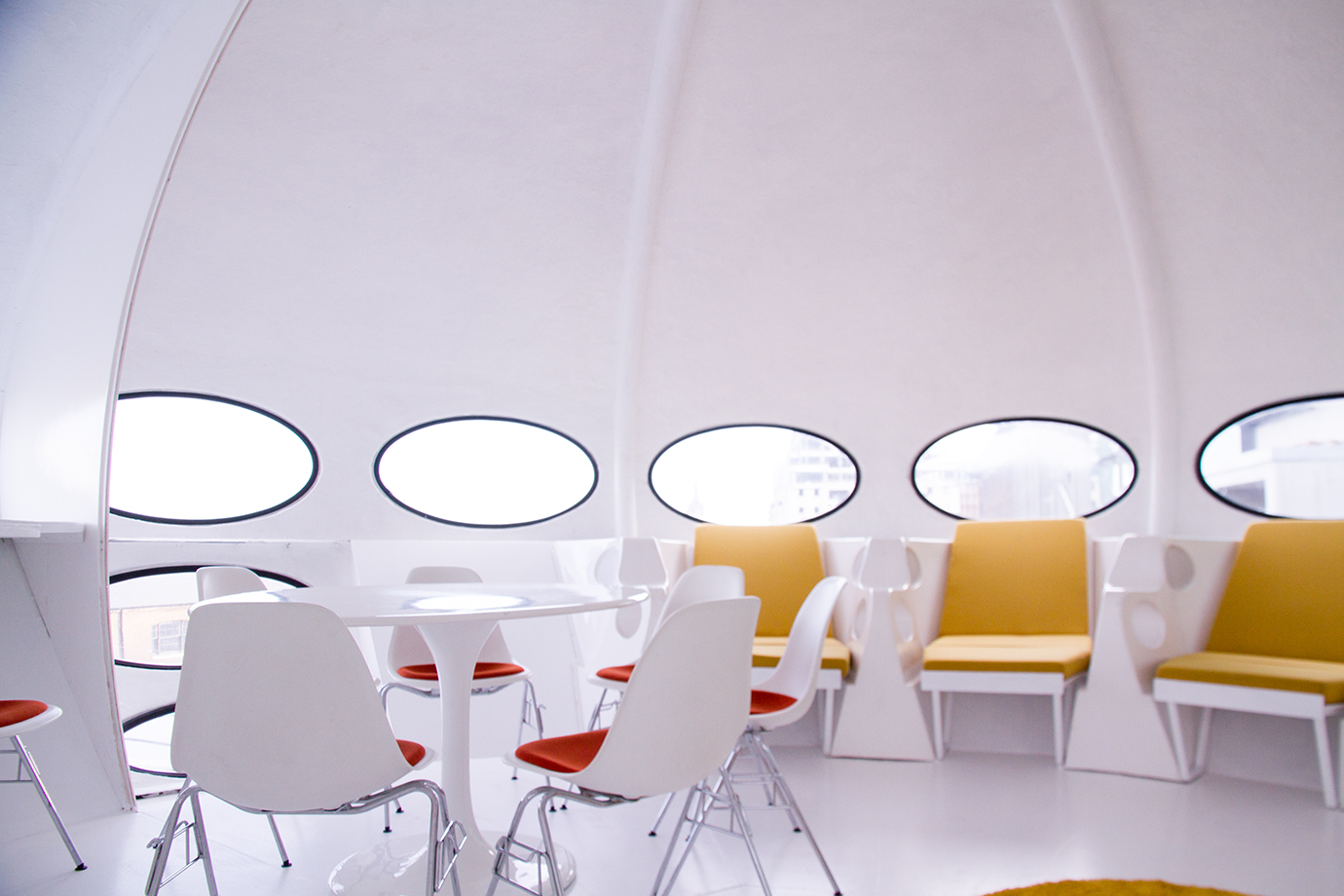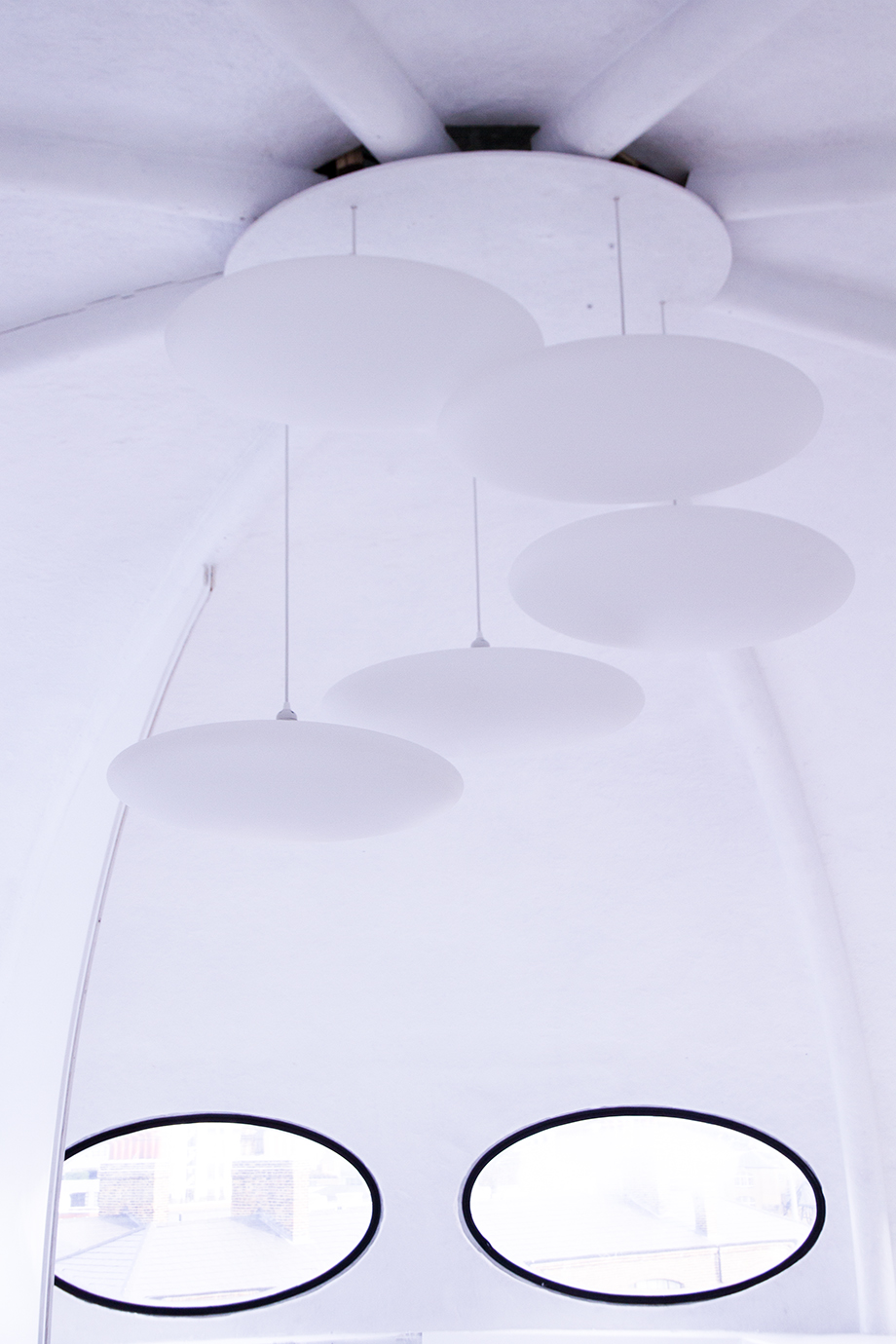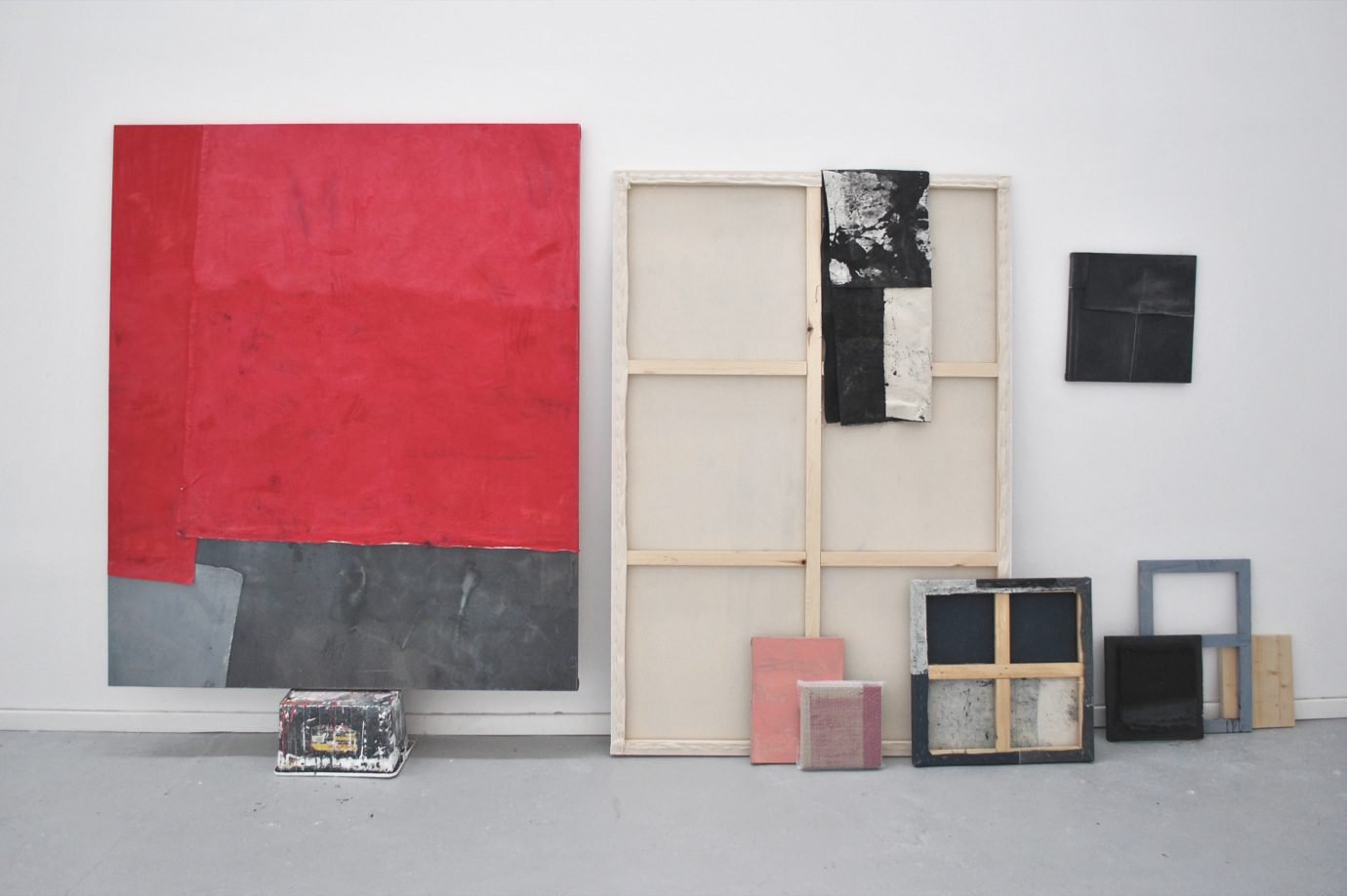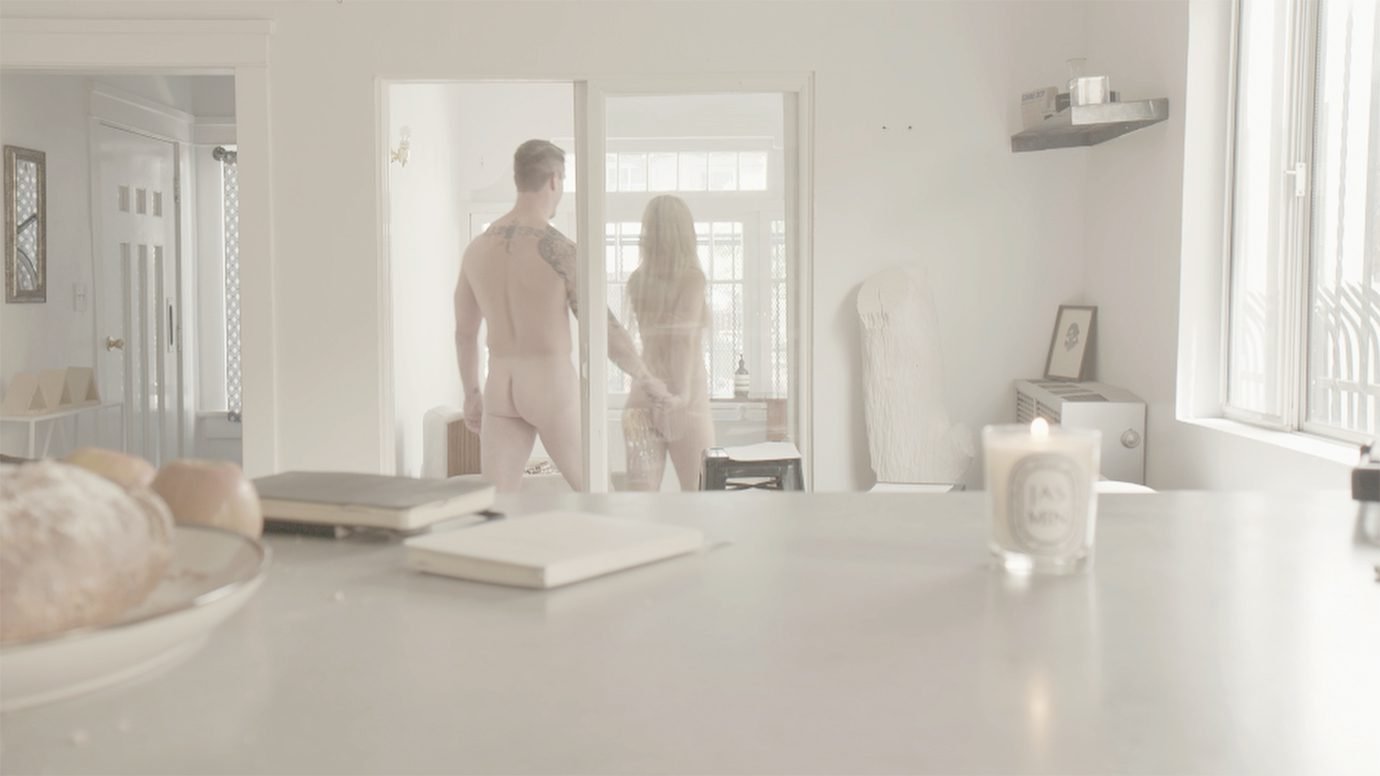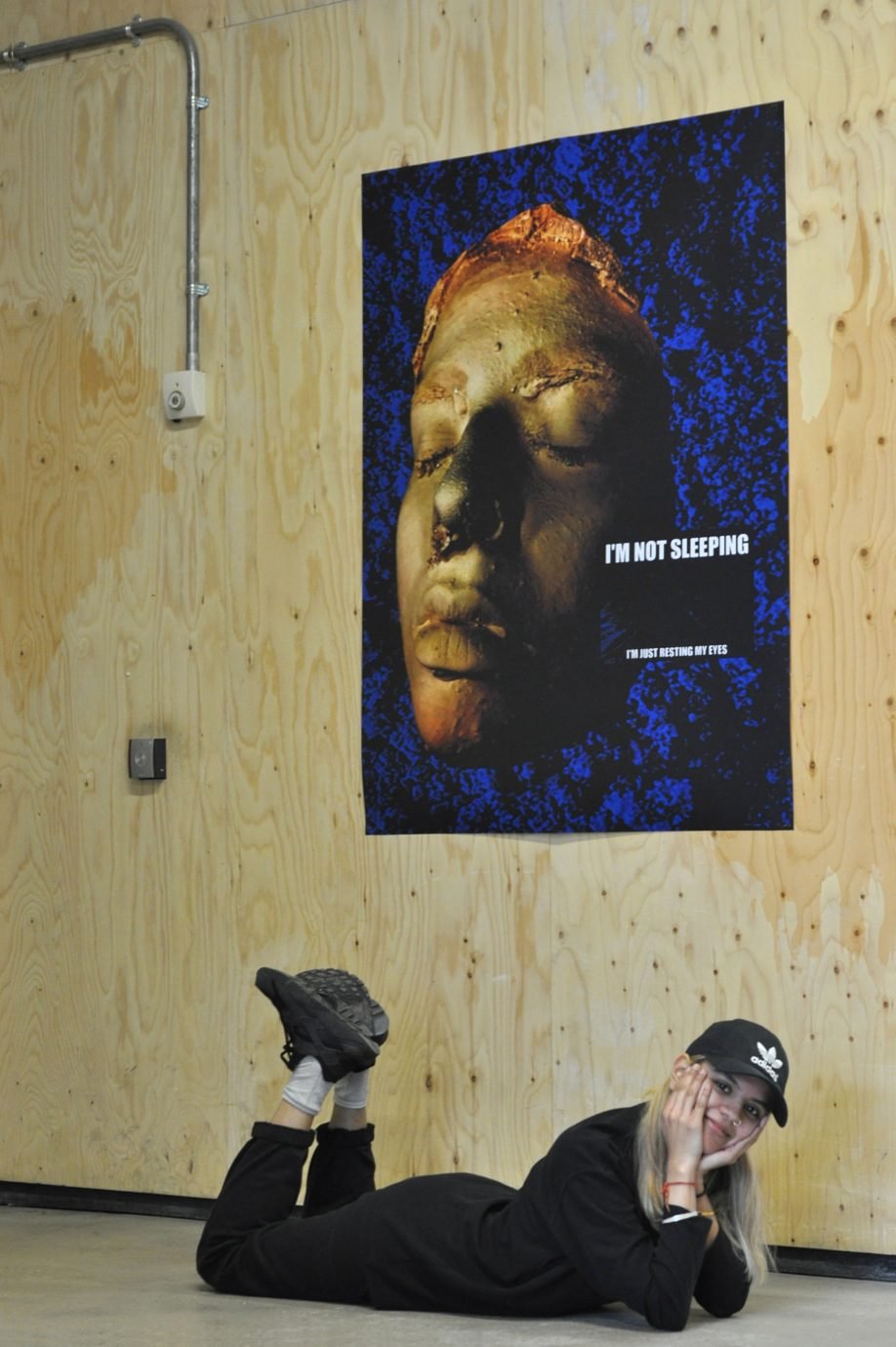“IF YOU STAY IN THE SAME PLACE TIME AFTER TIME, YEAR AFTER YEAR, YOU ARE WHAT YOU ARE AND YOU DON’T QUESTION IT.”
Craig Barnes, the man who owns a spaceship house
The Futuro House is perhaps one of the most poignant incarnations of the utopian spirit of the 60’s and 70’s and its downfalls. Conceived as a ski cabin, it embodies a time where technological advancements seemed to have promised a future of leisure and economical prosperity. However, it was hated by the public, and most of the units were destroyed. Artist and CSM alumni Craig Barnes bought and renovated one of the few remaining houses, and set it up first at Matt’s Gallery, and now on top of Central Saint Martins. In our definitely less optimistic times, we met him inside the Futuro House to talk about his relationship with it.
You were a student at CSM, how does it feel to be back?
I was entirely at Charing Cross, so geographically and physically this is odd. Because I know a number of the individuals, I know the sense of the institution, but everything is different.
Does it still feel like the same university when you’ve never experienced the new building in your school years?
Yeah it does. Initially, it felt very alien. Four years ago, when I came to see the first end of year shows, I really didn’t want to hate it, but I hated it. It felt like a badly transplanted organ. But you need to spend a bit of time getting under the skin of any big complex thing. There’s been a really concerted effort to try and identify what the details that make up Central Saint Martins are, because you have to, in order to inhabit this space. You have to go, ‘well, what are we?’ There is that level of questioning. If you stay in the same place time after time, year after year, you are what you are and you don’t question it. So yeah, I do like it here.
Let’s talk about the house itself. How did your fascination with it start? Where does your interest in this piece of architecture come from?
This is something I saw from a very small age. My parents originate from South Africa and we would go there to visit my extended family. There was a spaceship house in the small seaside town in which we would gather. Every time we would go, we would say ‘can we see the spaceship house?’ It was a private house on a quiet residential backstreet. You couldn’t go into it, you couldn’t go up to it. So it has been ingrained in my mind from when I was three years old.
Then there is my adult fascination with small scale architecture, modular systems and how an object embodies faded ideals or spirits. I’m interested in the romantic beauty of this spaceship. It looks very shiny now, but I’ve tried to make it timeless. There are subtle things I’ve done in the restoration process where I have not wanted it to exist as a historical artefact. There is a discussion to be had around what is it that drove the creation of this in a certain time and era, and how we can reflect upon that or harness some of the spirit in the here and now.
“I HAVEN’T SPENT THE NIGHT IN IT. I THINK THAT ONE MIGHT GO MAD QUITE QUICKLY.”
What do you think is the type of spirit that created this house?
It is a sense of optimism and possibility. Although it was built by an architect working with a plastics firm, for me, it is an amazing piece of art. It wasn’t successful as a product, but it was one belligerently seen through until the end. In many respects it didn’t work, but it also did because it encapsulated something of that time. But I like it not being too rooted in a specific era. There are associations with that aesthetic, but there are elements that are very contemporary. I hope it can be used as a vehicle for starting back up a way of thinking. Some kind of optimism about a sense of possibility, about being able to do things.
I am interested by the fact that you keep calling it a spaceship, because it was conceived during an era where space exploration really represented a utopian tomorrow. And now space exploration seems to come back in the conversation. Are you excited by this return?
Yeah, but also terrified at the same time. We just discovered water on Mars, but no one seems worried about the excess of melting water on the planet we inhabit now. I think that it is one of these things where we, as mankind, defined ourselves, conquering new worlds, especially in the era from which this house originated. For various reasons we didn’t continue that journey. In the beginning there was that sense that we just needed to do it to prove we could. I think that the reality of the world today is that we’re not necessarily looking at the possibilities of space with quite such an optimistic outlook. It’s a very different world we find ourselves in, 40 years down the line.
It’s quite a pessimistic world right now, whereas this was built to be a leisure house, it’s such an optimistic object.
I can talk about the utopian ideals of this until the cows come home, but actually it’s an incredibly impractical and uneconomical way to live. It’s almost like the myopic vision of one person. The man who built this wasn’t even interested in the cultural tide of the time. He was interested in mathematics. He went to his grave almost annoyed that it was coopted in this cultural movement, this plastic space age utopianism. For him, all he was interested in, is that you can draw a mathematical formula for this house. It’s twice as wide as it is high, and whenever possible, as much as possible, that shape is repeated throughout it. For him that was it: it’s a mathematical shape. And there is something more poetic in the simple beauty of that outlook. It’s the pursuit of an ideal, and if that ideal is mathematical perfection as architecture, this is what you get. Maybe more mathematicians should build buildings.
What are the concrete benefits students can get from having a structure like this within the school?
I have worked with the university to devise three ways in which the space can be used. Students and staff can write a proposal that responds to the protocols created for it. If it is hitting the right touchstones, then your student thing can happen in here. Then there’s a slightly broader curatorial possibility where applications can be submitted through the college for exhibitions, performances and events. And then the college is inviting the outside world to come and use it as they might imagine it be used for them. At that point it starts becoming commercial. I want it to be of use for all and sundry. Also all the rules are different here, it is not somewhere where you can hang a painting, or just plug into an overhead projector. I think that’s the challenge and the excitement.
“THE MAN WHO BUILT THIS WASN’T EVEN INTERESTED IN THE CULTURAL TIDE OF THE TIME. HE WAS INTERESTED IN MATHEMATICS.”
What interested you in opening this space to others?
On a selfish, personal level, I am very interested in the experience of space, and how anything that happens in here is affected by the space. Because it’s not like anything else that is commonly accessible. Whether we’re conscious of it or not, one’s experience of space on a daily and hourly basis affects how we think about the world, our moods, how we react to others.
My sort of underpinning idea is quite basic, it is to enable people to have access to this, and for me to take a step back and see what that does. I think for me the best projects are when you set up a scenario and you see what happens. It’s just letting things take their course. And we’ll see what comes back in a year’s time.
Have you lived in it?
No.
Would you try?
Yeah, absolutely. Maybe we should do a residency here. Maybe I should be the first resident. But then, I haven’t spent the night in it. I think that one might go mad quite quickly.

